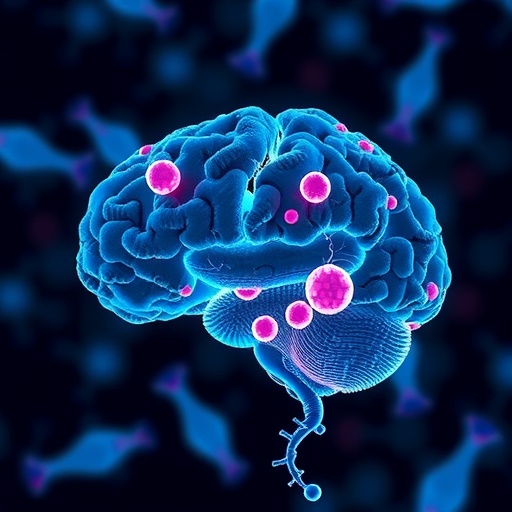In recent years, the intricate interplay between the nervous and immune systems has captivated neuroscientists and psychiatrists alike, promising new vistas for understanding and treating mood disorders. A groundbreaking study published in Translational Psychiatry in 2025 by Nava et al. sheds unprecedented light on how antidepressants modulate neuroimmune cytokine networks, thereby influencing mood regulation. This pioneering research offers compelling evidence that antidepressant efficacy may extend far beyond traditional monoaminergic theories, encompassing profound neuroimmune interactions that hold the key to future therapeutic innovations.
For decades, antidepressants have been conceptualized primarily through their ability to rebalance neurotransmitters such as serotonin, norepinephrine, and dopamine. However, accumulating clinical and experimental data have challenged this narrow framework, revealing that immune dysregulation and chronic inflammation frequently co-occur with mood disorders, particularly major depressive disorder (MDD). The study by Nava and colleagues compellingly demonstrates that antidepressants exert their effects, at least in part, by modulating cytokine networks within the central nervous system, orchestrating an immunological milieu conducive to mood stabilization.
At the heart of this work lies the comprehensive profiling of cytokines—small signaling proteins that mediate immune responses—in neuronal and glial populations under the influence of various classes of antidepressants. The research utilized cutting-edge multiplex assays and single-cell RNA sequencing to dissect cytokine expression patterns with extraordinary resolution. Results indicate that selective serotonin reuptake inhibitors (SSRIs), tricyclic antidepressants (TCAs), and novel agents variably downregulate pro-inflammatory cytokines such as interleukin-1 beta (IL-1β), tumor necrosis factor-alpha (TNF-α), and interferon-gamma (IFN-γ), while concurrently upregulating anti-inflammatory mediators like interleukin-10 (IL-10) and transforming growth factor-beta (TGF-β). This bidirectional modulation appears critical for re-establishing homeostatic neuroimmune conditions that support emotional resilience.
A particularly intriguing finding involves the differential regulation of microglial activation states. Microglia, the resident immune cells of the brain, dynamically shift between pro-inflammatory (M1) and anti-inflammatory (M2) phenotypes. Nava et al. reveal that antidepressants promote a phenotypic shift towards M2-like states, characterized by enhanced phagocytic activity, trophic support for neurons, and secretion of neuroprotective cytokines. This microglial reprogramming likely attenuates chronic neuroinflammation implicated in synaptic remodeling deficits and anhedonia, common hallmarks of depression. The study’s data resonate with emerging theories positioning microglial plasticity as a therapeutic target.
Beyond microglia, astrocytes and neurons themselves emerge as critical sources and targets of cytokine modulation. The study illuminated complex autocrine and paracrine feedback loops whereby astrocytes respond to antidepressant exposure by secreting neuroimmune factors that alter synaptic function and plasticity. Concretely, changes in chemokine gradients and growth factor production directly influenced neural circuits implicated in mood regulation, including the hippocampus, prefrontal cortex, and amygdala. These insights broaden the classical neurochemical view and spotlight glial-neuronal crosstalk as integral to antidepressant action.
Additionally, the work tackles the temporal dimension of cytokine modulation, revealing that neuroimmune changes precede mood improvements in both animal models and clinical observations. This temporal precedence underscores cytokine networks as potential biomarker candidates for treatment response, offering new diagnostic tools for clinicians. Advances in peripheral and cerebrospinal fluid cytokine profiling could soon allow personalized medicine approaches, tailoring antidepressant regimens based on individual immune signatures to maximize therapeutic efficacy while minimizing adverse effects.
Importantly, the mathematical modeling components in Nava et al.’s study provide a sophisticated framework for understanding the nonlinear dynamics of cytokine interactions. By simulating feedback loops and cytokine network topology alterations induced by antidepressants, the authors propose mechanistic hypotheses that reconcile variability in clinical treatment outcomes with underlying immunological heterogeneity. This integrative model could inform future clinical trial designs, stratifying patients by cytokine network profiles to optimize intervention strategies.
Of particular relevance from a translational perspective is the study’s exploration of novel pharmacological agents that target cytokine pathways directly. Compounds inhibiting the NLRP3 inflammasome, a core regulator of IL-1β maturation, showed synergistic effects when combined with traditional antidepressants in animal behavioral paradigms. These findings pave the way for adjunct immunomodulatory therapies explicitly designed to rectify aberrant neuroimmune states associated with mood dysregulation, heralding a new era of combinatorial treatments for depression resistant to conventional approaches.
The implications for neuropsychiatric disorders extend far beyond depression. Given the neuroimmune basis for comorbidities observed in anxiety disorders, bipolar disorder, and schizophrenia, insights gleaned from this research may catalyze paradigm shifts in understanding diverse psychopathologies. By elucidating the bidirectional couplings between emotional states and immune function, the study highlights the potential of immunopsychiatry as a transformative discipline bridging neurology, psychiatry, and immunology.
Moreover, this research invigorates public health approaches to managing mood disorders. Recognizing the immune dimension of depression invites integrative treatment modalities incorporating diet, exercise, and stress reduction techniques known to impact systemic inflammation. Consequently, therapeutic strategies extending beyond pharmacology emerge as viable complements to neuroimmune modulation, promising holistic benefits to patients.
Beyond its clinical relevance, the methodological rigor and interdisciplinary synthesis in Nava et al.’s work set a new benchmark for neuropsychiatric research. The seamless integration of immunology, molecular biology, computational modeling, and behavioral neuroscience exemplifies a modern approach to unraveling complex brain disorders. The study’s design anticipates future advances in single-cell and spatial transcriptomics that will further clarify cell-type specific cytokine contributions in human brains.
In conclusion, this landmark study redefines the landscape of antidepressant research by illuminating the critical role of neuroimmune cytokine networks in mood regulation. By elucidating how diverse classes of antidepressants orchestrate cytokine signaling to recalibrate brain-immune dialog, Nava and colleagues provide a mechanistic blueprint underpinning emotional resilience. These insights not only enhance our biological understanding of depression but also inspire innovative therapeutic paradigms that harness neuroimmune plasticity. As research momentum accelerates, the nexus of psychiatry and immunology promises to yield revolutionary breakthroughs in preventing and treating mood disorders.
Subject of Research: Neuroimmune regulation of mood disorders; modulation of cytokine networks by antidepressants
Article Title: Modulation of neuroimmune cytokine networks by antidepressants: implications in mood regulation
Article References:
Nava, R.G., Adri, A.S., Filgueiras, I.S. et al. Modulation of neuroimmune cytokine networks by antidepressants: implications in mood regulation. Transl Psychiatry 15, 314 (2025). https://doi.org/10.1038/s41398-025-03532-y
Image Credits: AI Generated




